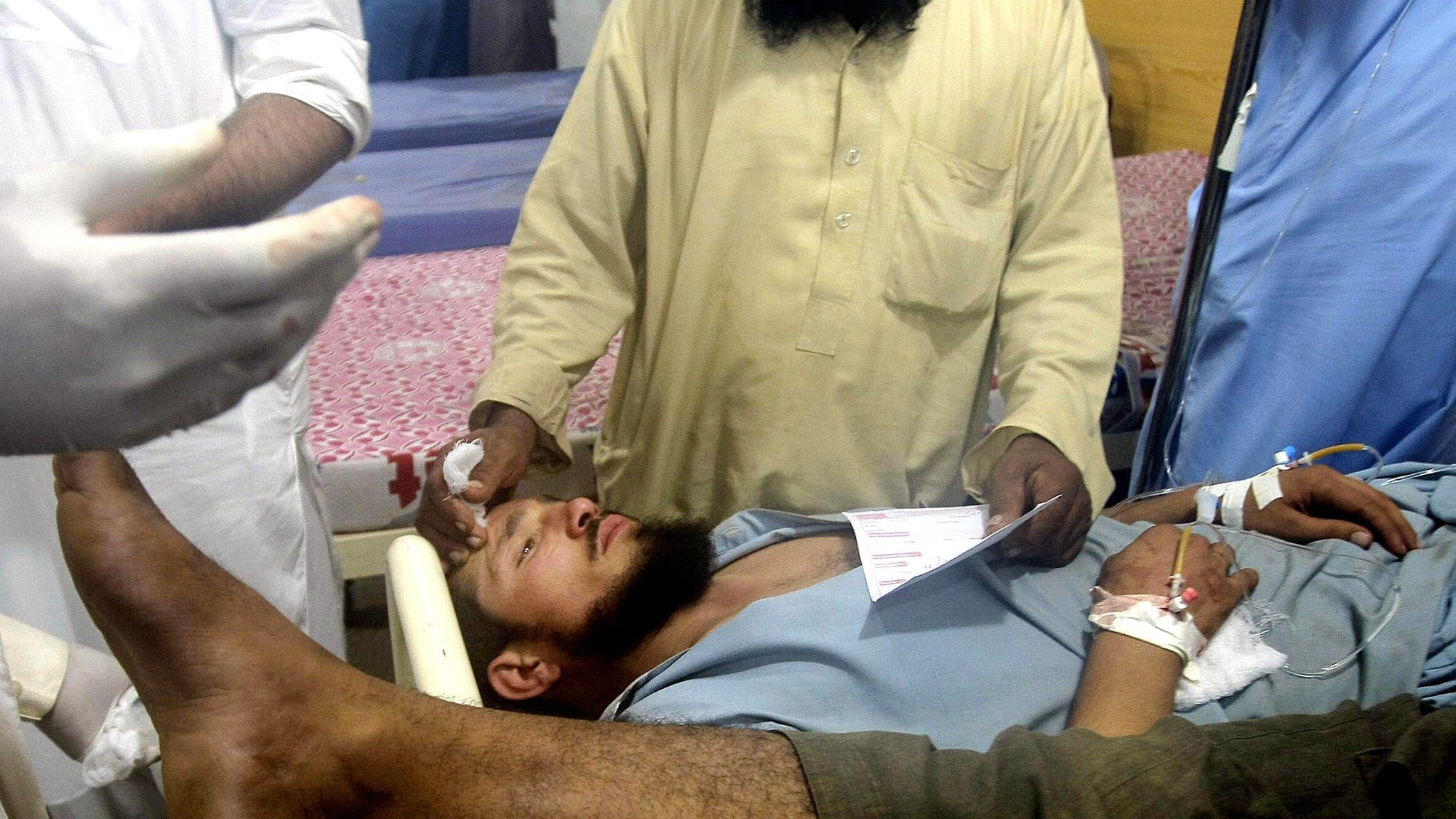Afghanistan-Pakistan earthquake leaves hundreds dead
- Published
The BBC's Shaimaa Khalil reports from Kabul on the devastation in Pakistan and Afghanistan
More than 260 people have died, mostly in Pakistan, after a magnitude-7.5 earthquake hit north-eastern Afghanistan.
Tremors from the quake were also felt in northern India and Tajikistan.
At least 12 of the victims were Afghan schoolgirls killed in a crush as they tried to get out of their building.
The earthquake was centred in the mountainous Hindu Kush region, 76km (45 miles) south of Faizabad, the US Geological Survey reported, external.
The death toll is set to rise as the most severely affected areas are very remote and communications have been cut off.
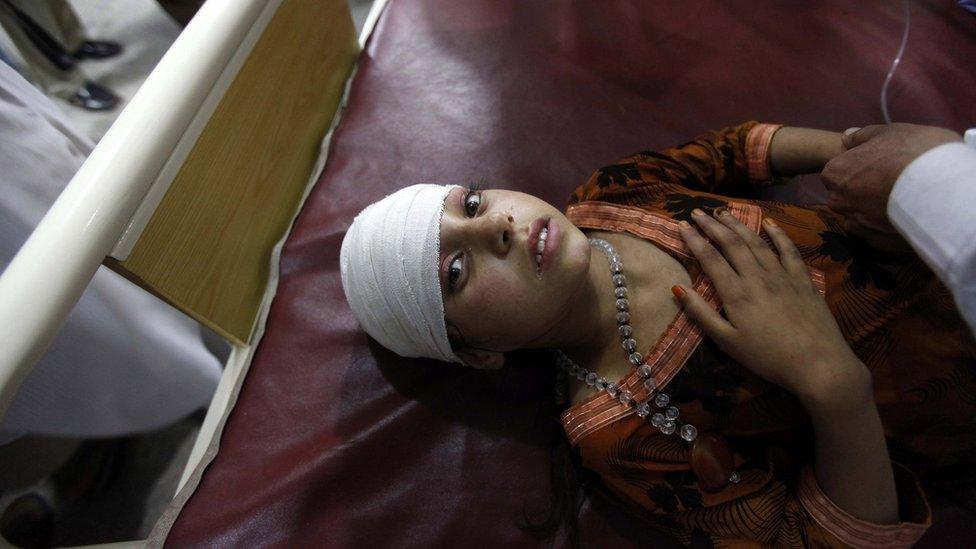
This girl was among those being treated at a hospital in Peshawar, in Pakistan
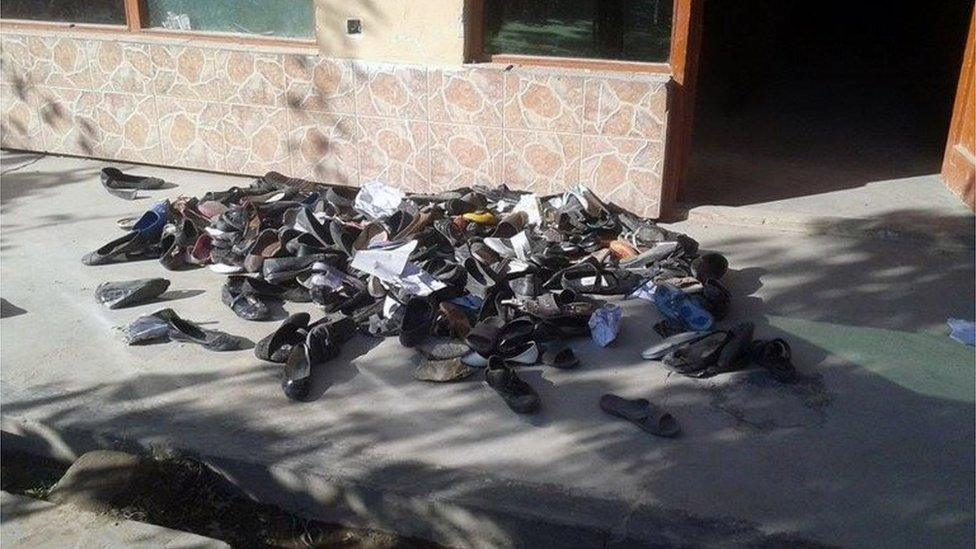
The shoes of Afghan girls involved in a deadly stampede at their school in Takhar Province were left outside their building
In Pakistan, the death toll has risen to at least 214, in the northern mountainous areas.
In Khyber Pakhtunkhwa province alone, authorities said at least 179 people were known to have died, and more than 1,800 were injured.
Pakistan's Prime Minister Nawaz Sharif is cutting short a visit abroad and returning home.
Sunnatullah Timour, a spokesman for the governor of the Afghan province of Takhar, told the BBC that as well as the fatalities at the girls' school, another 25 students were injured in the stampede.
Deaths and injuries have also been reported in the Afghan provinces of Nangarhar, Badakhshan and Kunar, with at least 52 killed in total.
Afghanistan's Chief Executive Abdullah Abdullah tweeted, external that the government had asked aid agencies to work with it to help those in need.
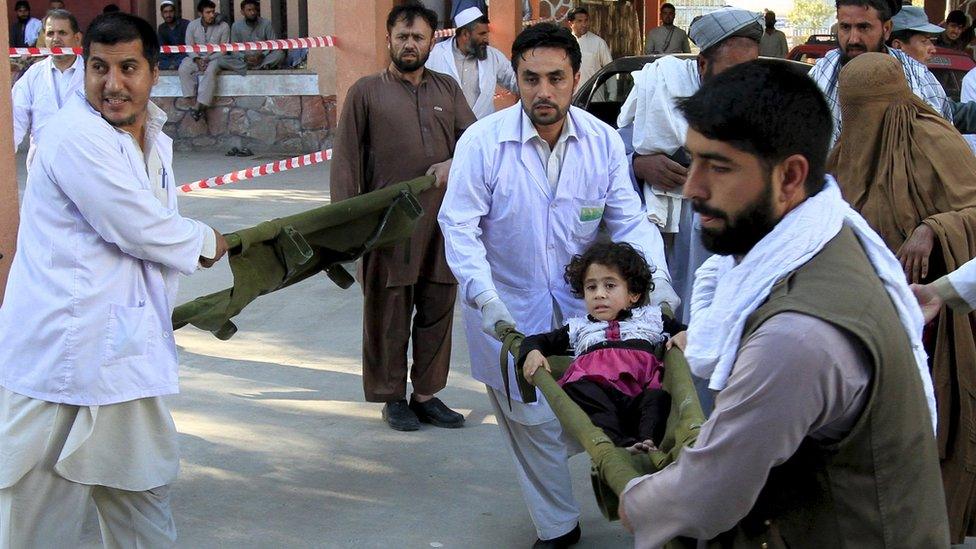
Injured people were brought to a hospital in Jalalabad, Afghanistan

These buildings in Afghanistan's Badakshan province, near the epicentre, were damaged
However as the earthquake originated more than 200km (125 miles) below the earth's surface, the damage is less than that which a similarly powerful but shallow tremor might cause.
In the city of Karimabad, in Pakistan's Gilgit-Baltistan, a witness who gave his name as Anas told the BBC that the quake had sent a landslide crashing into the Hunza river.
"At first it was as if someone was shaking us. There were about 20 of us and we just held on to each other," he said.
"Right after that we saw a major landslide. Some people say it was a glacier that came down, some people say it was a hill. It fell right in front of our eyes."
Pakistan Geological Survey head Imran Khan told the BBC there were reports of landslides disrupting the Karakoram highway between Gilgit and Baltistan. However, he said it was too early to say if any glaciers were destabilised by the quake.
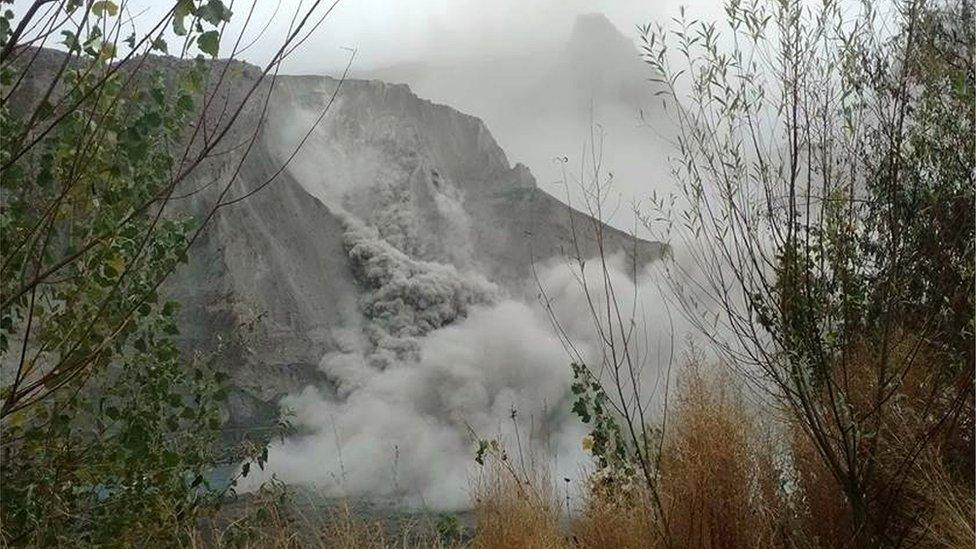
The earthquake triggered a landslide in Pakistan's northern Hunza valley

Analysis by Jonathan Webb, BBC News science reporter
Even at its revised magnitude of 7.5, this was a powerful tremor. Around the world only about 20 quakes each year, on average, measure greater than 7.0.
But its focus was deep - much further below the surface than the 7.8 quake which brought widespread destruction to eastern Nepal in April. That event was only 8km deep and was followed in early May by an aftershock with magnitude 7.3.
Similarly, the devastating 2005 Kashmir earthquake was magnitude 7.6 and just 26km deep. Today's quake, at a depth of more than 200km, appears to have caused widespread but less severe ground shaking.

People in the Indian capital Delhi ran into the streets after the tremor struck, and schools and offices were evacuated. The Delhi metro was also briefly halted.
Indian Prime Minister Narendra Modi tweeted, external that he had ordered an urgent assessment of any damage.
"We stand ready for assistance where required, including Afghanistan and Pakistan," he said.
Catherine Bhatti, from Durham in the UK, was visiting relatives in Sarghoda, Pakistan, when the quake struck.
"It came out of the blue, everything started to move slightly then it became stronger. We made our way downstairs and gathered outside on the lawn," she told the BBC.
"My in-laws, who have lived here all their lives, say they have never experienced anything like this before."
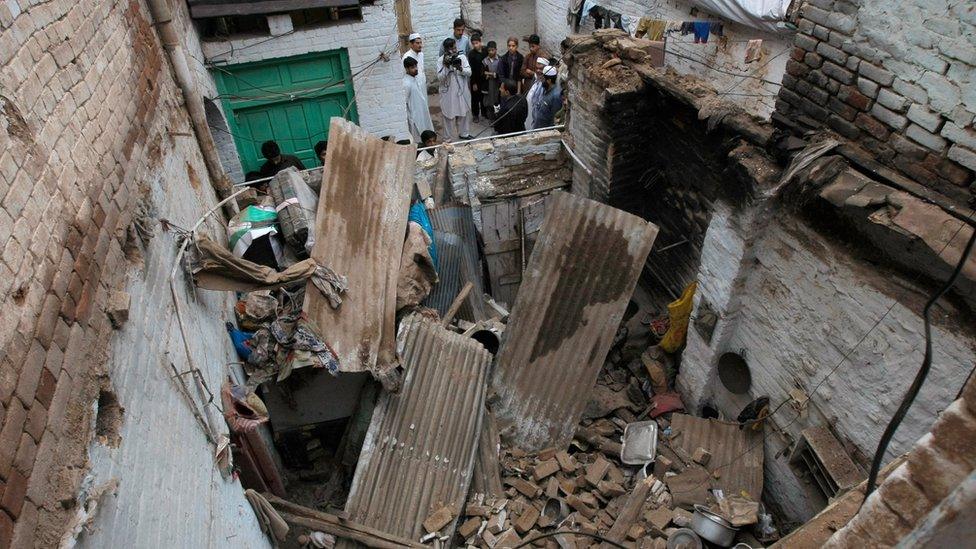
This home in Peshawar was destroyed by the earthquake
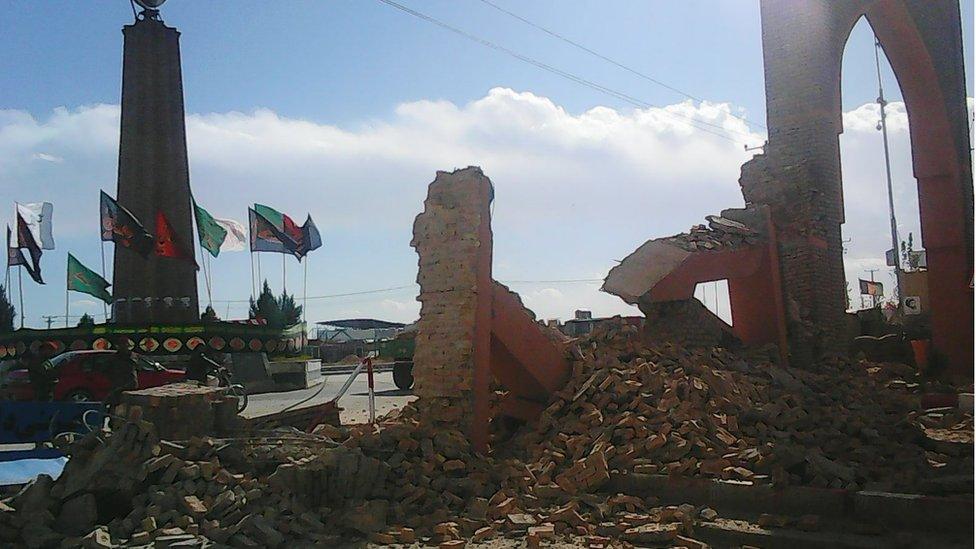
Pictures from Ghazni, south-west of Kabul, showed damage to buildings
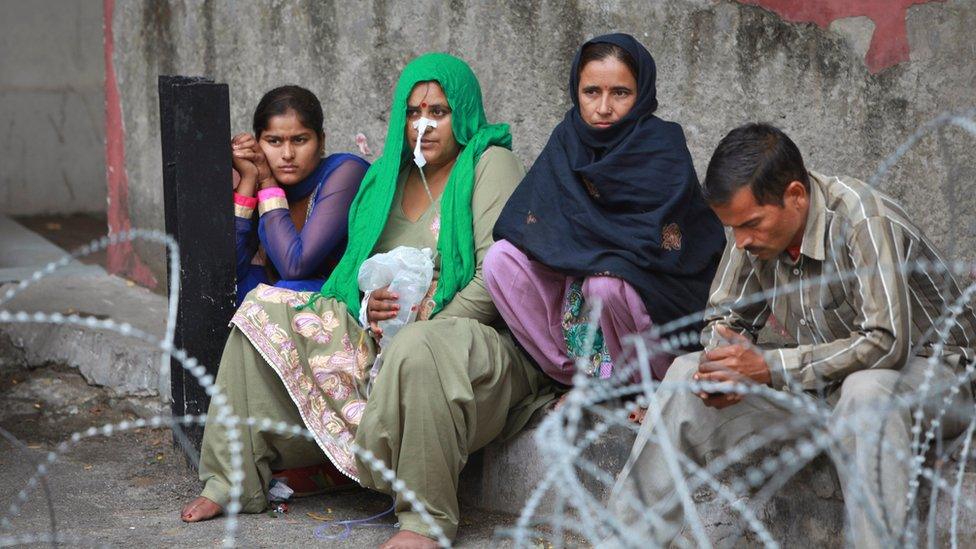
These patients were evacuated from their hospital in Jammu, India after the quake was felt
Buildings in the Tajik capital Dushanbe were damaged by the tremors.
Local media report that a staircase at a school in Tajikistan's Yavan district collapsed, injuring 14 children.
There are also reports of injuries in a stampede at Khorog state university in Tajikistan, as a building was evacuated.
The region has a history of powerful earthquakes caused by the northward collision of India with Eurasia. The two plates are moving towards each other at a rate of 4-5cm per year.
In 2005, a magnitude 7.6 quake in Pakistan-administered Kashmir left more than 75,000 people dead.
In April this year, Nepal suffered its worst earthquake on record with 9,000 people killed and about 900,000 homes damaged or destroyed.

Have you been affected by the earthquake? You can email haveyoursay@bbc.co.uk, external with your experiences.
Please include a contact number if you are willing to speak to a BBC journalist. You can also contact us in the following ways:
Whatsapp: +44 7525 900971
Send pictures/video to yourpics@bbc.co.uk, external
Tweet: @BBC_HaveYourSay, external
Send an SMS or MMS to 61124 or +44 7624 800 100
- Published27 October 2015
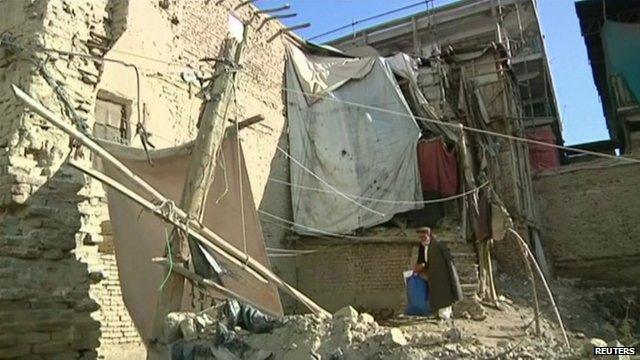
- Published22 June 2022

- Published26 October 2015
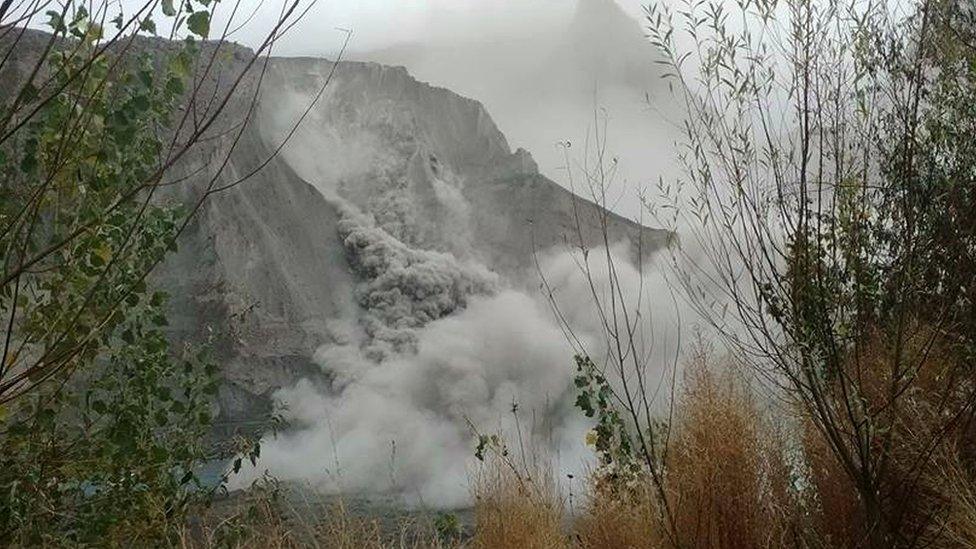
- Published26 October 2015

- Published26 October 2015
